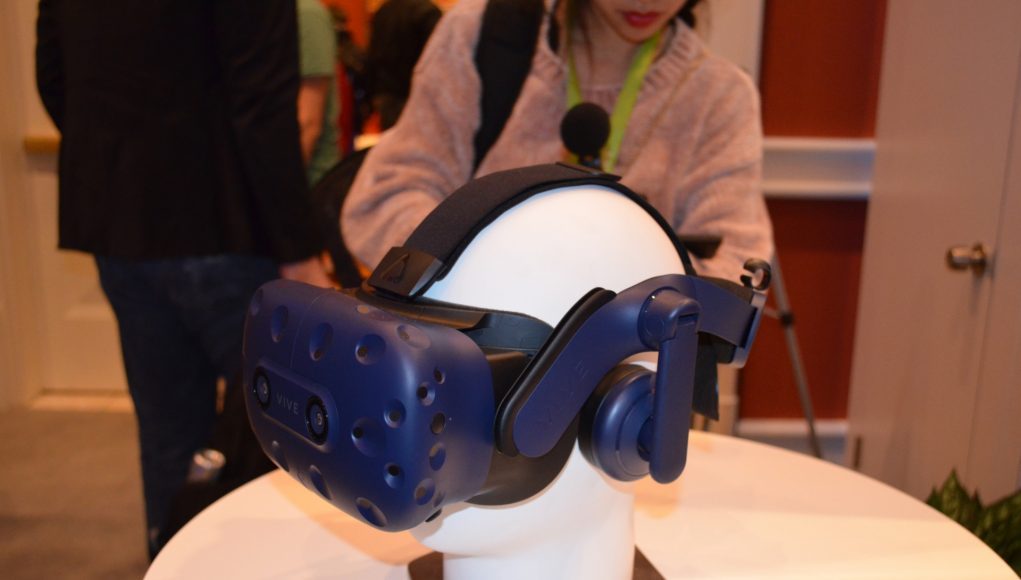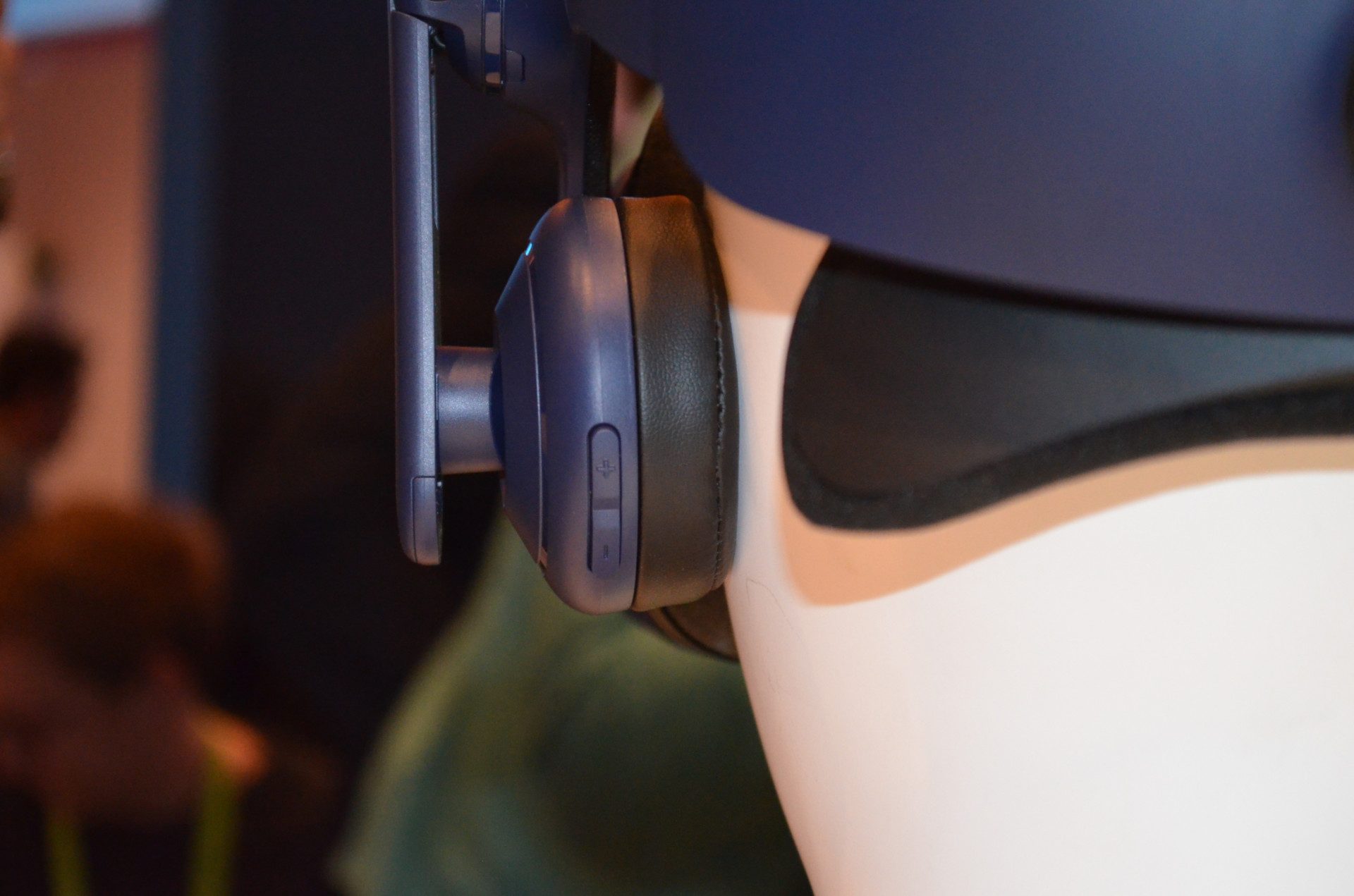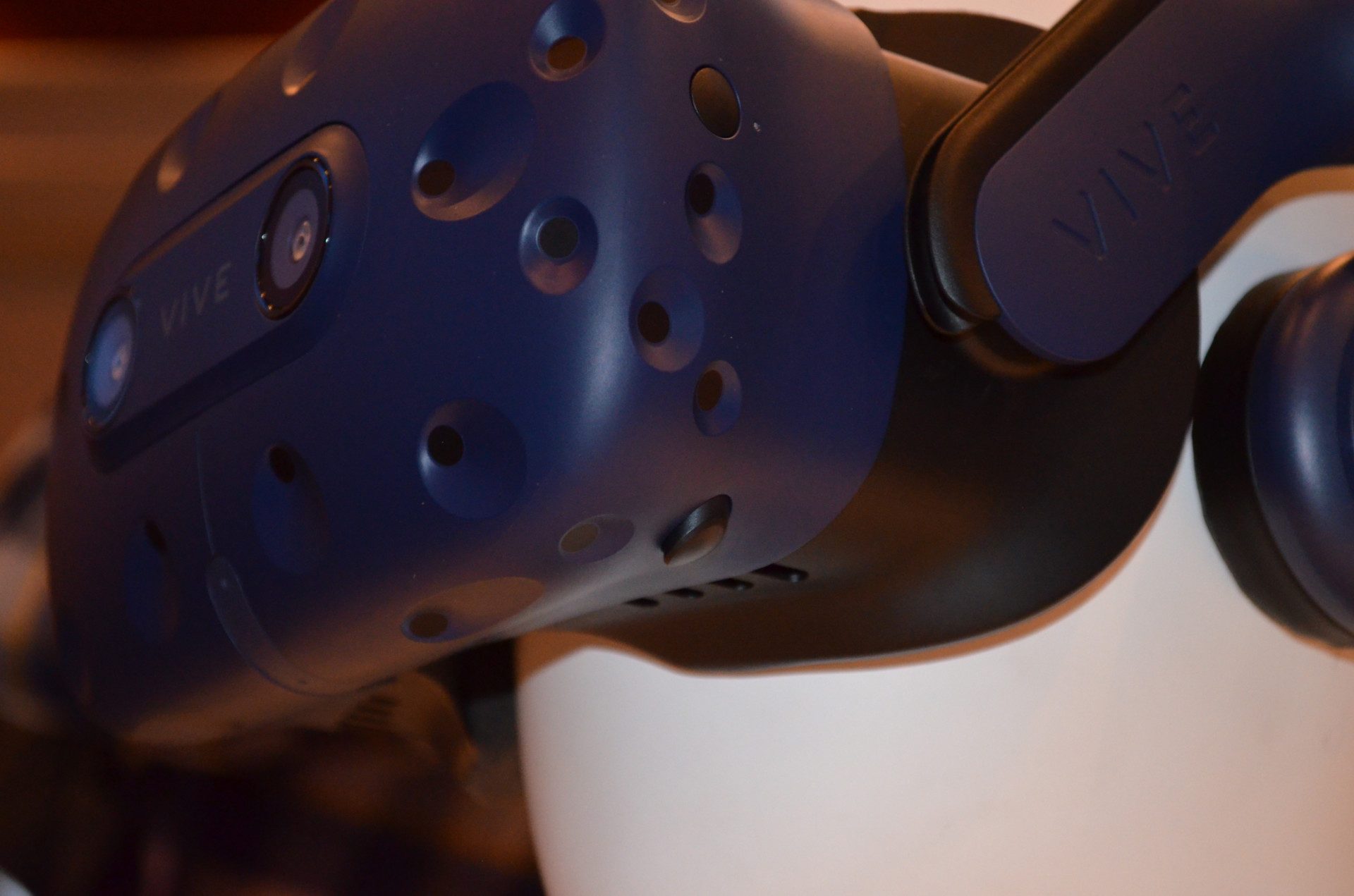Today at a pre-CES Vive press event, we got a look at the newly announced HTC Vive Pro, a higher-resolution headset from the company acting as a sort of ‘Vive 1.5’.
Update (1/9/18): Catch our in-depth hands-on with the new HTC Vive Pro here.
Firstly, the addition of a 2880 x 1600 resolution OLED display ( 1440 x 1600 per display) makes the new Vive Pro a full 78% higher resolution than the standard Vive headset, which is 2160 x 1200. The original Vive is still going to be sold “through 2018” however, says Vive GM Daniel O’Brien.
Not only does it bump the resolution, but it includes a few of the ‘premium’ add-on comforts of the original Vive including integrated audio via a headstrap similar to the original deluxe audio strap – a $100 add-on. Now a standard feature of the new Vive Pro, the headphones are actually now removable, and the side struts appear to sit further from the users temple.
An in-line amp is said to provide a better audio experience over the previous model. Also interesting to note: the back left headphone has volume buttons on it for quick manual adjustment.
Besides some of the obvious bits, the new headset has replaced the old knob mechanism for adjusting the lens-to-eye distance with a single button. Vive GM Daniel O’Brien says this makes it even easier for glasses-wearer since is fast to adjust.
The rear strap has the familiar tightening nob and a guide for the tether. There’s actually a large flat piece that cups the back of the head that’s under the back strap.
The headset also includes dual mics, an in-line amp, and dual passthrough camera sensors. We’ll have a hands-on with the Vive Pro later today, so we’ll be able to test out just how the dual passthrough cameras work. The dual passthrough cameras replace the original Vive’s single camera.
You’ll notice tracking sensors are still a big feature on the Vive Pro, as the headset is backwards compatible with the original SteamVR 1.0 tracking with its 2.0 tracking sensors nodules.
We’re trying it right now as we speak, so we’ll bring our hands-on as soon as humanly possible. Check back for more virtual and augmented reality news to come from this year’s CES.











